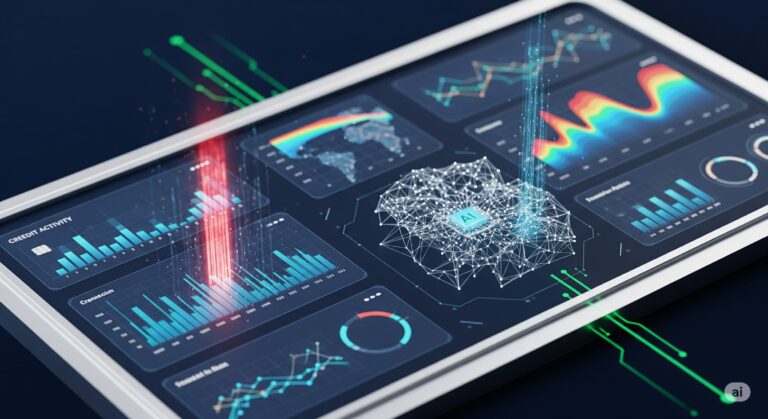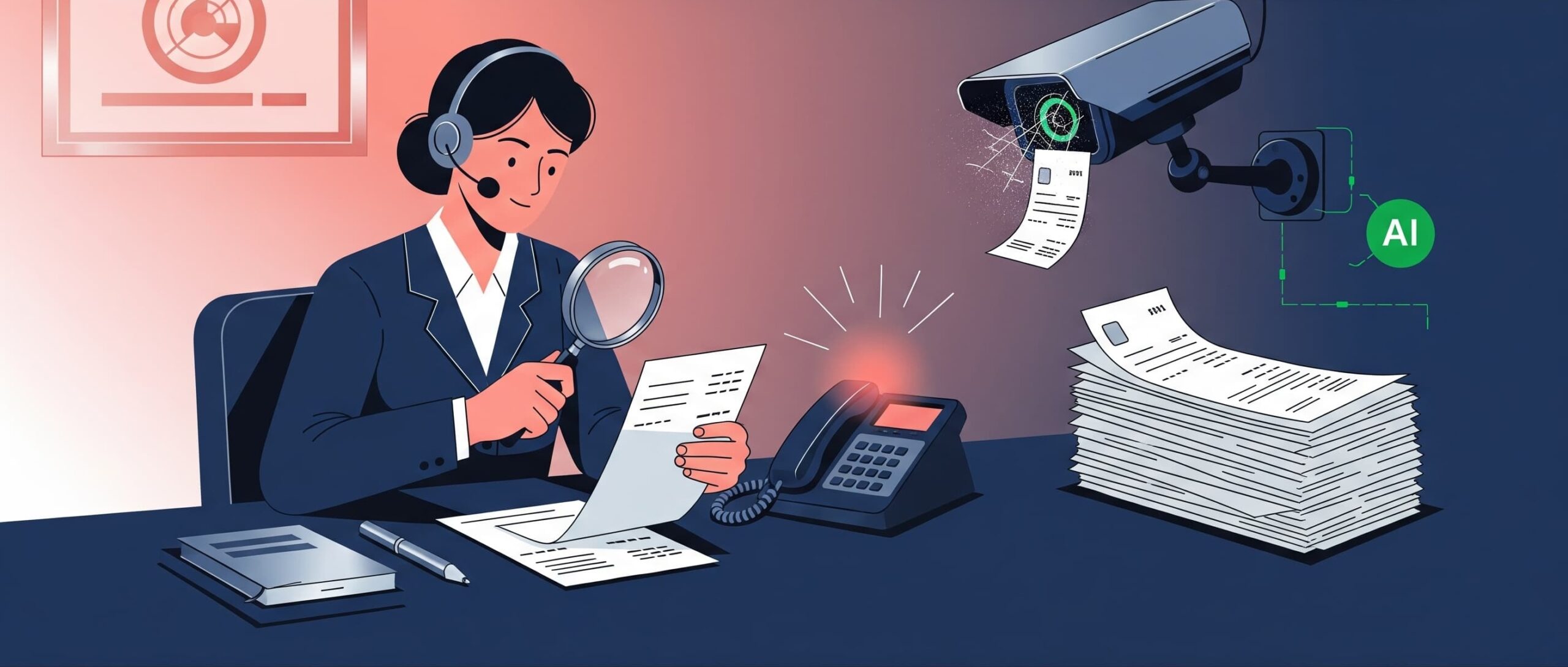Introduction: A Swipe, A Scam, and a Solution for Credit Card
Imagine this: You just got your morning coffee. You tap your credit card, grab your cup, and walk out. A few hours later, you get a notification from your bank: $800 spent at a store you’ve never heard of. You feel your stomach drop. How did this happen? You never even took your card out of your sight!
If this sounds familiar, you’re not alone. Credit card fraud has been a persistent issue in the U.S. for years. But here’s the good news: Artificial Intelligence (AI) is stepping in as a powerful ally in the fight against financial fraud. This blog takes you through the challenges with credit card safety in the U.S. and explores how AI is transforming the security landscape.
The Scope of the Problem: Credit Card Fraud in the U.S.
The United States has long been a hotspot for credit card fraud. According to the Federal Trade Commission (FTC), Americans lost over $10 billion to fraud in 2023 alone, with credit card scams being one of the top contributors.
But why is the U.S. so helpless? Several reasons come into play:
- High Card Usage: Credit cards are extremely common in the U.S. Americans conduct over 50 billion credit card transactions annually.
- Lagging Security Features: The U.S. was late in adopting chip-enabled (EMV) cards, which are far more secure than magnetic stripe cards.
- Massive Data Breaches: High-profile cyberattacks like the Equifax breach in 2017 compromised the data of millions.
- Dark Web Sales: Stolen card information is easily bought and sold online.
These weaknesses mean that even cautious consumers can become victims.
A Short History of Credit Card Security
To understand how AI is improving credit card safety, it helps to see where we’ve been.
- 1960s-1980s: The first magnetic stripe cards were introduced. Easy to use, but also easy to clone.
- 1990s-2000s: Online banking and e-commerce took off, creating new fraud opportunities.
- 2015: U.S. finally began widespread adoption of EMV chip cards, improving security.
- 2020s: As fraudsters became more sophisticated, banks turned to machine learning and AI for real-time fraud detection.
Despite progress, the cat-and-mouse game between criminals and financial institutions continues.
The Traditional Tools: How Credit Card Fraud Was Handled Before AI
Before AI, most fraud detection systems relied on rules-based engines. These systems would flag transactions based on pre-set rules:
- A charge over $1,000?
- A purchase in a foreign country?
- A transaction at 3 AM?
Flag it. Hold it. Investigate it.
While these systems worked to a degree, they had big problems:
- High False Positives: Legitimate transactions were often blocked.
- Slow Response: Fraud was usually caught after the fact.
- Inflexibility: Criminals quickly adapted to static rules.
It was like trying to catch a hacker with a mousetrap.
Enter AI: The Game-Changer
Now, banks and payment companies are deploying Artificial Intelligence to sniff out fraud in real-time, often before the customer even notices. Here’s how it works:
- Machine Learning Algorithms: These systems analyze thousands of data points—location, spending history, device type, and more—to assess whether a transaction is genuine.
- Behavioral Biometrics: Some companies use AI to study how you type, tap, or even swipe your phone to create a unique profile.
- Real-Time Analysis: Unlike rules-based systems, AI models can flag and block a suspicious transaction instantly.
Visa, for instance, uses AI to analyze up to 500 unique risk attributes in less than a second for every transaction.
Real-World Examples: AI in Action for Credit Card
Let’s look at how some financial giants are leveraging AI:
- American Express: Uses machine learning to understand each customer’s behavior and flag anomalies.
- Chase Bank: Combines AI with human analysts for a double-layer defense.
- Capital One: Invests heavily in AI research to stay ahead of fraud trends.
Even fintech startups like Sift and Feedzai are helping e-commerce platforms and smaller banks improve their fraud detection capabilities.
Why AI Works Better for Credit Card: The Key Advantages
AI doesn’t just replace older systems; it makes them obsolete. Here’s why:
- Speed: AI systems can analyze data in milliseconds.
- Adaptability: They learn and evolve as new fraud patterns emerge.
- Accuracy: By combining multiple data sources, AI reduces false positives.
- Scale: AI can handle millions of transactions simultaneously.
In short, it’s like upgrading from a flashlight to night vision goggles.
The Role of Big Data
AI is only as good as the data it learns from. Financial institutions now collect and analyze enormous datasets:
- Transaction histories
- Location data
- Device fingerprints
- IP addresses
- Social media behavior (in some cases)
Privacy is a concern, but when handled responsibly, this data enables much more secure banking experiences.
Challenges and Ethical Concerns
AI isn’t perfect. Here are a few challenges:
- Bias in Algorithms: Poorly trained models can unintentionally discriminate.
- False Negatives: Sometimes fraud still slips through.
- Privacy Concerns: Over-collection of data may infringe on user rights.
- Overdependence: Too much reliance on AI could lead to vulnerabilities if systems fail.
Transparency and human oversight are essential to make AI a trustworthy partner.
How Consumers Can Stay Safer (With or Without AI)
AI helps, but individuals still play a key role in credit card security. Here are some tips:
- Use cards with chip and contactless technology.
- Regularly check your statements and credit reports.
- Set up transaction alerts on your phone.
- Never share your PIN or card details.
- Use strong, unique passwords for online banking.
Also, consider enabling multi-factor authentication for any app linked to your finances.
What’s Next? The Future of AI and Credit Card Security
The future looks promising. We can expect:
- AI-Powered Voice Recognition: Identifying customers by voice tone and speech patterns.
- Federated Learning: Training AI models across different banks without sharing raw data.
- Zero Trust Architecture: A security model where nothing is trusted by default—even internal systems.
- Quantum-Resistant Encryption: Protecting against the supercomputers of tomorrow.
As AI continues to progress, so too will its role in making our financial lives safer.
Conclusion: A Smarter, Safer Swipe
Credit card fraud may never fully disappear, but thanks to AI, it’s becoming a lot harder for criminals to succeed. From real-time fraud detection to behavioral biometrics, artificial intelligence is transforming how we protect our money.
As consumers, we benefit directly from these advances—fewer headaches, fewer phone calls to the bank, and greater peace of mind. And as we move forward, one thing is clear: in the battle for financial security, AI is proving to be one of our best defenders.
What do you think? Would you trust AI to protect your wallet? Let us know your thoughts.
References:
- Federal Trade Commission (FTC) Fraud Report 2023 – https://www.ftc.gov/news-events/data-visualizations/data/consumer-reports
- Visa Security Report – https://usa.visa.com/visa-everywhere/security.html
- McKinsey: Fighting fraud with AI – https://www.mckinsey.com/industries/financial-services/our-insights
- American Express on AI – https://www.americanexpress.com/en-us/business/trends-and-insights/
- World Bank Digital Payments Overview https://www.worldbank.org/en/topic/financialinclusion/brief/digital-paymentsIMF on Fintech and AI – https://www.imf.org/en/Publications/WP/Issues/2022/02/04






